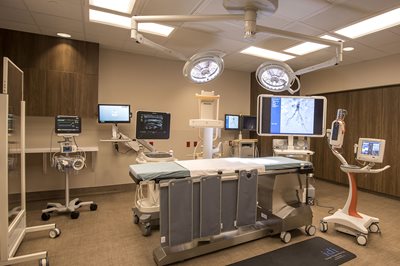 Surgeons at Catholic Medical Center (CMC) are again leading the way with a new approach to treating peripheral artery disease (PAD).
Surgeons at Catholic Medical Center (CMC) are again leading the way with a new approach to treating peripheral artery disease (PAD).
PAD affects as many as 18-million Americans, but is believed to be widely underdiagnosed. It’s caused by plaque buildup in the arteries, which reduces blood flow and causes pain, mobility problems, and wounds that don’t heal. PAD most frequently occurs in the arteries in the leg.
An atherectomy scrapes away that plaque and prepares the artery for a balloon angioplasty or stent to help restore blood flow. These procedures involve inserting surgical tools through a catheter typically placed in the femoral artery, located in the groin. With new technology, surgeons can now access the diseased artery by going through the wrist instead.
It’s a more comfortable, less invasive method that presents fewer potential complications and allows for a quicker recovery time. Doctors at CMC’s state of the art practice, Vein & Vascular Specialists, performed the first surgery of this kind in New England. If left untreated, PAD, or hardening of the arteries, can lead to serious problems like fewer potential complications and allows for a quicker recovery time.
Doctors at CMC’s state of the art practice, Vein & Vascular Specialists, performed the first surgery of this kind in New England.
If left untreated, PAD, or hardening of the arteries, can lead to serious problems like organ damage or failure. Early diagnosis and treatment are important to restoring vascular health and avoiding those complications.
“Patients must also be committed to lifestyle changes, like eating healthy, exercising, and quitting tobacco, if they want to realize long term vascular health,” says Dr. Furey, a vascular surgeon with the New England Heart & Vascular Institute.